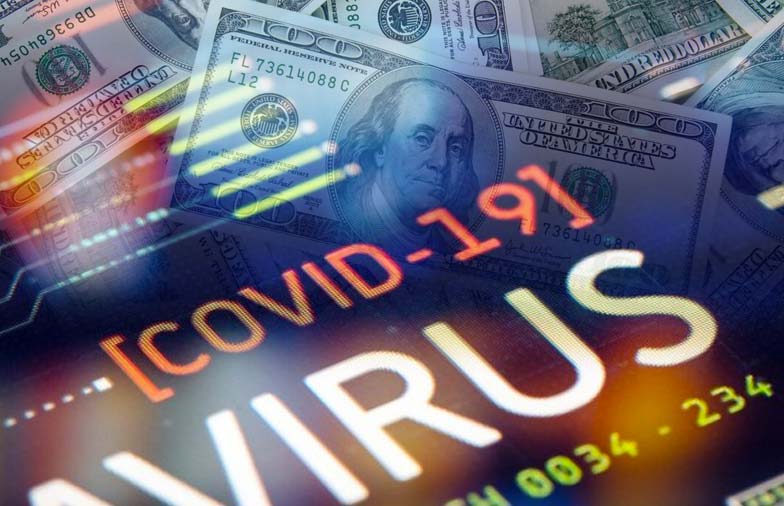
US Stimulus Package Should Incorporate
Digital Dollars
March 25th, 2020
Ezechiel Copic is a Partner at cLabs, working on the Celo blockchain platform. He previously held a variety of roles at the Federal Reserve Bank of New York.

As the world grapples with the devastating effects of the coronavirus, the need for a digital alternative to paper money becomes increasingly clear. In light of the potentially ruinous economic impact now facing society, the U.S. government is preparing an enormous fiscal stimulus package likely calling for the Treasury Department to send checks to every citizen in the country. But this approach has significant shortcomings — and the government needs to adopt a more innovative alternative.
In a nod to these shortcomings, adraft Senate bill, inspired by an earlier House Democrat proposal, redirected the public discourse by calling for the use of a “digital dollar” and a corresponding “digital dollar wallet” to help send funds expeditiously to all qualified individuals.
Until now, stimulus distribution methods have been distressingly slow to implement. When a similar policy was enacted in 2008, it took upwards of three weeks to directly deposit stimulus checks, while physical checks were mailed out over a nine-week period.
Waiting weeks, if not months, for help, however, is not an option for many. According to the JPMorgan Chase Institute, 65% of families in the U.S. lack sufficient funds to weather a simultaneous income dip and expenditure spike, while 50% of small businesses have less than 15 cash buffer days.
Embracing the power of technology, and incorporating a mechanism similar to digital dollars into the stimulus response, is a much needed step in the right direction. Using a concept like digital dollars, stimulus funds could potentially be sent instantly and directly to the mobile phone or email address of every person in the country, safely and securely.
Importantly, digital dollars don't require access to a bank account, thus helping improve financial inclusion by addressing the needs of millions of Americans that remain unbanked, according to the FDIC.
But improvements in distributional efficiency and increased access are just part of the appeal. The flexibility and programmable nature of technology protocols underpinning today's digital currencies and stablecoins also allow for a more innovative transmission of fiscal and monetary policy, especially in times of crisis.
Following the U.S. government's 2008 stimulus program, a University of Michigan survey found only 20% of those who received checks used the money for new purchases, while 48% paid off existing debt, with the rest going into savings. The impact of monetary policy over this period was also limited. Despite the Federal Reserve increasing money supply since 2008 by an average annual rate of 16%, the economy grew by just 4% on average over that period.
The reason government policies are often not as effective during times of crisis is that people tend to save (or hoard) money instead of spending it. Although understandable, such behavior reduces what economists call the “velocity” of money.
Put simply, velocity is the number of times a dollar (or any other currency for that matter) is used to pay for something. The more times a dollar is spent, the greater the economic impact. For example, the more often people buy bread from a bakery, the more money that baker has to hire workers and purchase ingredients, helping to fuel the overall economy. But if everyone decides to save their money and forgo bread, that baker will likely go bankrupt, and the economy will suffer.
Conventional wisdom suggests money velocity cannot be influenced. But recent technological advancements in money could shatter this myth, for the good of society. The programmable nature of technology platforms used to power digital dollars could be deployed to influence velocity by incentivizing consumer consumption in two potential ways.
First, consumers could receive “cash back” on digital dollar purchases. The more digital dollars they spend at local merchants, for example, the more they get back. While various credit cards offer such schemes, not everyone has access to these instruments; thus, digital dollars could amplify the effect and bolster spending. Additionally, depending on the nature of the crisis, certain industries could be targeted with added rebates, thus potentially mitigating the need for government bailouts.
Alternatively, the holding of digital dollars could incur a fee, sometimes called “demurrage”, to incentivize people to spend this money as soon as possible to mitigate the accrual of future fees. This might sound punitive, but such a policy was introduced during the Great Depression, on a limited scale, prompting people to significantly increase their spending and boosting the overall economy.
In either scenario (or perhaps both in unison), the velocity of digital dollars could be compelled higher, improving the effectiveness of fiscal and monetary policy. During these times of crisis, we need money that is faster to send, safer to use, and more likely to be spent. In short, we need digital dollars.
Ezechiel Copic is a Partner at cLabs, working on the Celo platform. He is focused on official sector outreach and engagement. Previously, Ezechiel served as Director of Central Banks & Public Policy at the World Gold Council, advising central banks on gold reserves management. Additionally, he worked in the Markets Group at the Federal Reserve Bank of New York in a variety of roles, focused on the understanding and implementation of monetary policy for the Federal Reserve System. Ezechiel can be reached at: ezechiel@c-labs.co
The views and opinions expressed herein are the views and opinions of the author and do not necessarily reflect those of Nasdaq, Inc.